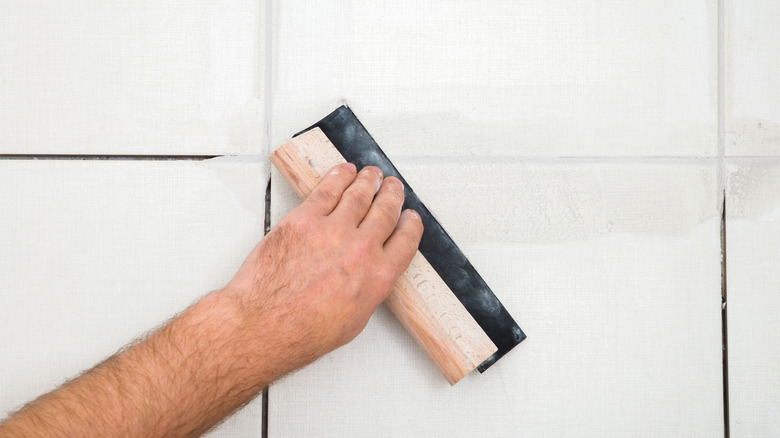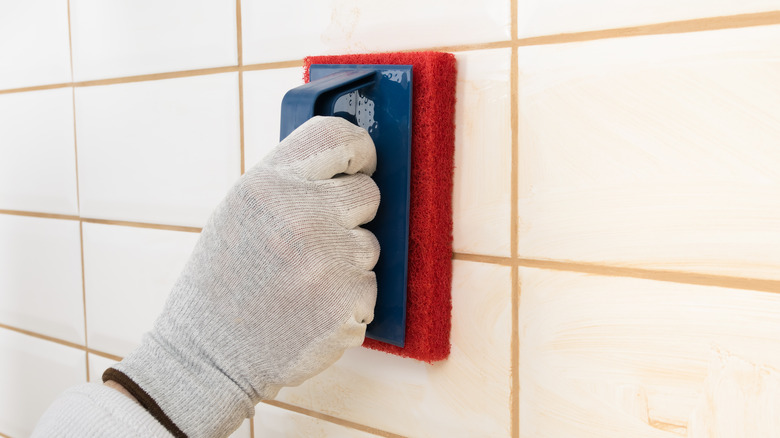The Real Reason You Need Grout To Install Tile
Floor tiles are versatile and can work in almost every room in your house. Other than flexibility, what makes them a great option for flooring is that they are easy to maintain, durable, and come in a variety of colors and designs. Additionally, according to Tile Outlets of America, the decision to install tiles should be followed by choosing the right grout from your selected store.
Grout is a very essential element used to fill joints between tiles after you complete installation. For this reason, it's important to select the right type of grout that will ensure a beautiful and aesthetically pleasing finish. That way you will not only have tilework that you enjoy looking at, but also that will last for a long time without succumbing to wear and damage. So, what are the available types of grout and why do you need them to install tiles? Tag along and get acquainted!
There are different types of grout
Essentially, there are three types of grout: sanded grout, unsanded grout, and epoxy grout. Sanded grout is a mixture of sand, cement, and other aggregate materials. This is the best for filling bigger joint lines, usually anything over 1/8 inch. Sanded grout make the strongest joints because the grains of sand easily join to form a solid joint. It also shrinks negligibly as it dries. It, however, shouldn't be used to grout joints thinner than 1/8 inch since the large grains of sand can excessively fill the joint and sap the strength of your structure.
Unsanded grout contains fine particles and has a rather smooth texture compared to sanded grout. Ideal for smaller joints usually 1/6 to 1/8 inches, the unsanded option is easier to work with, especially on vertical walls and when used with stretchable materials. This type of grout is bound to crack and evidently shrinks when dry, thus shouldn't be used in joints wider than 1/8 inch.
Epoxy grout is yet another option that you can go for. It is quite different from the cement-based joint since it is made of hardeners and raisin. What makes it special is that it doesn't stain, making it ideal for those areas that get more traffic, like outdoor patios. Besides, it's waterproof and needless to seal when used. Home Depot confirms that epoxy is less porous and works splendidly for joints wider than 1/8 inch.
Why do you need grout?
Grout provides a number of benefits to users. Firstly, it offers an aesthetic finish. Regardless of how perfectly you lay the tiles, if there is space left in between, the finish won't be as beautiful. Additionally, there are a variety of grout color choices available, making it possible for you to customize according to the tile color. Grout perfectly seals the space in between the tiles, too. The gap left after laying the tiles is likely to trap anything including dirt and unwanted material; using grout ensures that there are no gaps between tiles, making cleaning your floors a breeze.
Uniformity is yet another perk of using grout. To the naked eye, tiles may appear to have perfect edges. However, slight errors and uneven edges become evident once the tiles are laid. Grout covers these slight errors quite well and leaves the finished product looking neat and attractive. Grout also helps prevent damage to your newly laid tiles by holding them firmly and eliminating any space. Regardless of how perfectly you arrange the tiles, you cannot fill up the spaces between them. Even the tiniest of spaces provide wiggle room that allows the tiles to rub against one another, hence chipping.
Today, grout does more than hold the tiles firm, it also doubles up as a design, says Floor Covering News. Technology has made it possible to have color choices that add a touch of class to the overall designs.


